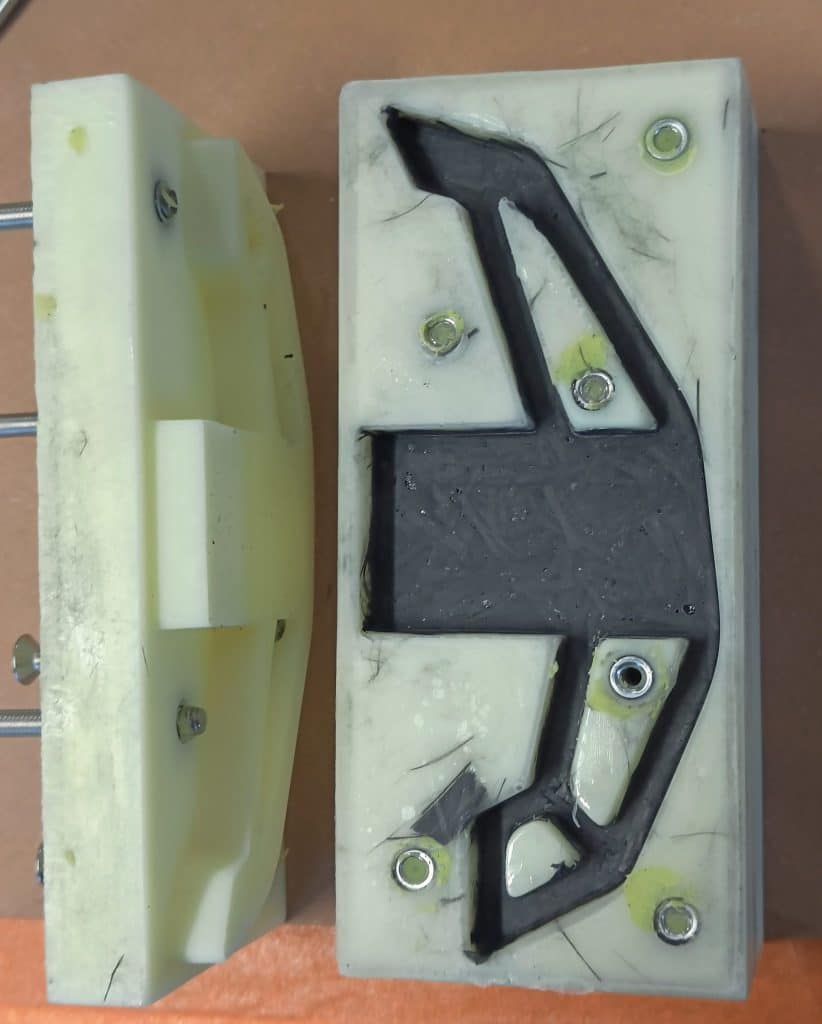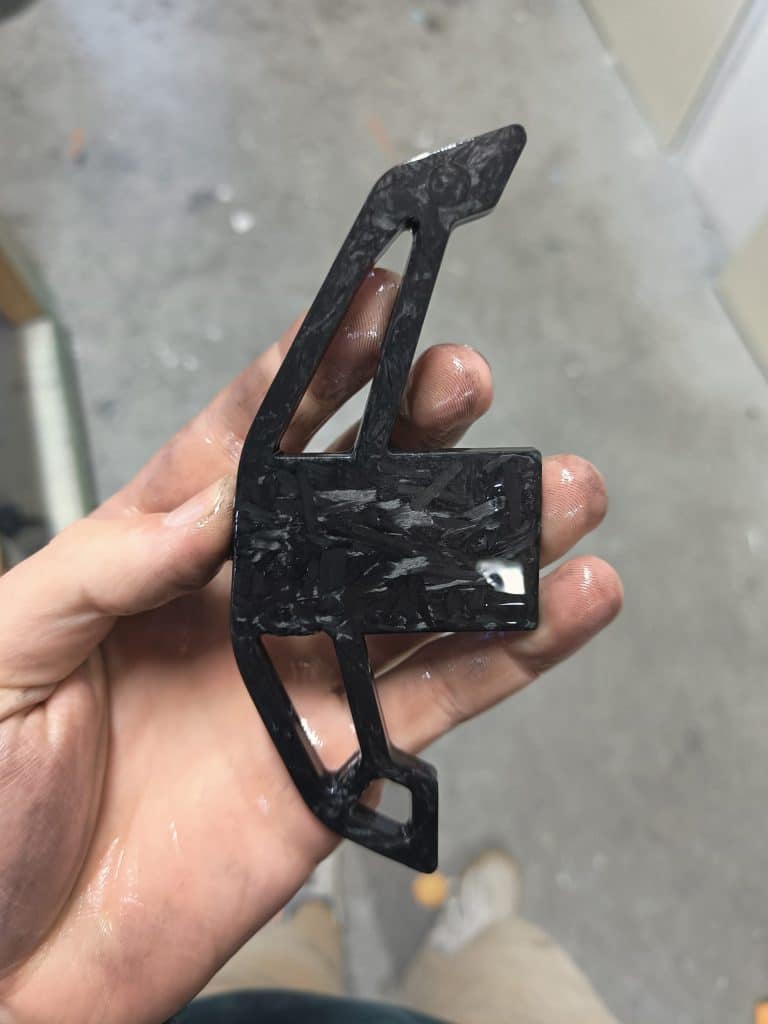Composite production
Composites are widely used in various industries. Fiberglass polyester composites in shipbuilding, carbon fibers in the automotive sector and bio-composites in the furniture industry. The high entry cost of conventional composite manufacturing techniques often makes small-scale production unattractive. Using 3D printed tooling, it is possible to realize composite products quickly and with high detail, at a relatively low cost.


Composites
A composite material can be defined as a combination of two or more materials that results in improved properties than the separate materials. Unlike metals, each material of the composite retains its chemical, physical and mechanical properties. The two components can be thought of as a reinforcement or fiber and a resin.
Compression tooling
Our production of compressed composites is done using 3D printed compression tooling. The tooling consists of multiple 3D printed parts and fit together almost seamlessly. By filling the tooling with resin and fibers and then compressing it, it is possible to achieve an ideal ratio of fibers to resin. This has distribution for the mechanical properties but also to the appearance. With this, an even surface is achieved.
